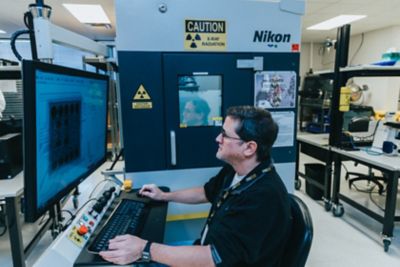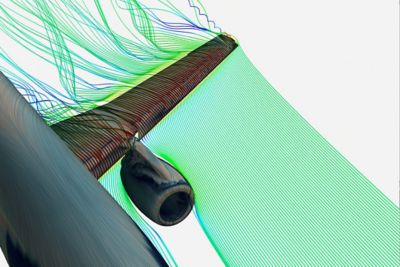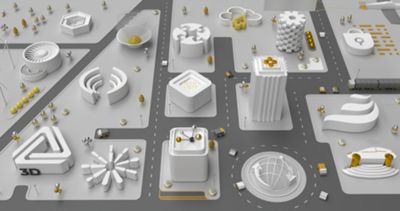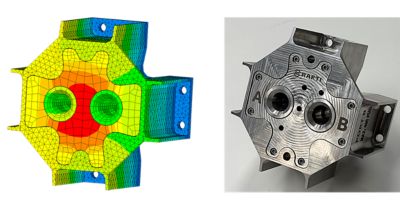-
United States -
United Kingdom -
India -
France -
Deutschland -
Italia -
日本 -
대한민국 -
中国 -
台灣
-
Ansys is committed to setting today's students up for success, by providing free simulation engineering software to students.
-
Ansys is committed to setting today's students up for success, by providing free simulation engineering software to students.
-
Ansys is committed to setting today's students up for success, by providing free simulation engineering software to students.
-
Contact Us -
Careers -
Students and Academic -
For United States and Canada
+1 844.462.6797

In 2023, more than one-third of the world’s population lacked access to the internet, meaning that 2.6 billion people were cut off from opportunities for education, employment, healthcare, knowledge-sharing, and even community engagement.
While that figure may seem unfathomable to those of us with 24-hour connectivity, it’s actually a 100 million-person improvement over the previous year.
Merely chipping away at the gap between the haves and have-nots is hardly a sustainable solution, however. Given the rapid acceleration of the digital age, those who are already disadvantaged are likely to fall even further behind.
There has to be a way to close the digital divide. Could the answer be a cube-shaped satellite roughly the size of a dishwasher and weighing only about 800 pounds?
Astranis thinks so.
The mission of the San Francisco-based startup is to build advanced satellites for high orbits: small, powerful, next-gen spacecraft built for the intense radiation environment of deep space, including geostationary orbit (GEO) and medium-earth orbit (MEO).
Astranis’ business model is next-gen too: The company provides bandwidth as a service by leasing dedicated satellites to small- and medium-sized countries, Fortune 1000 companies, and other customers as a turnkey solution. Astranis also proudly serves several government clients defending U.S. national security, including NASA and the U.S. Space Force. In fact, in January, Bloomberg named the company to its list of “10 defense tech startups to watch.”

Astranis co-founders: CEO John Gedmark (left) and CTO Ryan McLinko
Early Accomplishments, Big Plans
Astranis has launched five satellites so far, bringing broadband to millions around the globe, including in rural Mexico, the Philippines, and the U.S. The company made history on Dec. 29, 2024, becoming the first single commercial manufacturer to fly four of its own satellites on one mission to GEO.
The Astranis Block 2 quartet, launched successfully by SpaceX from Cape Canaveral Space Force Station, Florida, includes:
- NuView Alpha and NuView Bravo will provide service to in-flight connectivity provider Anuvu.
- Agila, in partnership with satellite services provider Orbits Corp., will be the first communications satellite dedicated to the Philippines.
- UtilitySat, a multimission spacecraft, will first provide broadband service to Mexico, then serve other commercial and government customers.
The four satellites have completed commissioning and are using their on -board ion thrusters to make their way to GEO.
The company plans to launch a total of 100 satellites by 2030.

Astranis Alaska satellite deploying solar arrays
Simulation for Deep Tech Innovation
Simulation plays a crucial role in the success of satellite launches and operations, especially for a company like Astranis, which has already achieved significant milestones and has lofty goals ahead.
As a participant in the Ansys Startup Program, Astranis leveraged multiple Ansys solvers to optimize the MicroGEO iterative development process and qualify the satellite for 10 years of service. That included Ansys HFSS 3D electromagnetic simulation software, which enabled the company to simulate its game-changing design.
Astranis also accessed:
- Ansys Mechanical software for analyzing components with different loads and stresses, including the loads during launch and in-orbit operation.
- Ansys Thermal Desktop software for modeling heat transfer and thermal balance.
Ultimately, simulation helped Astranis produce an innovative deep tech system fast, efficiently, and at a fraction of the cost of traditional GEO satellites.

Small Satellites for High Orbits
From our Earth-bound perspective, it’s tough to imagine how big and bulky GEO satellites really are, but it’s not unusual for a traditional telecom satellite to be the size of a double-decker bus. Building something that large (and making sure it can withstand high levels of radiation and extreme thermal cycling) can be incredibly expensive. Even something as simple as turning a screw on one of those satellites can be a multi hour job for a technician in a cherry picker. It’s easy to see why some GEO satellites wind up costing hundreds of millions of dollars.
By designing its satellites to be smaller, lighter, and able to be manufactured at a regular facility, Astranis reduced production time and costs, which in turn increased customer value.
As for why Astranis chose to put its satellites in GEO rather than low Earth orbit (LEO), where the vast majority of satellites are, the answer relates largely to two factors essential for communication: positioning and coverage.
Satellites orbiting in GEO basically match the Earth’s rotation — they travel at the same speed the Earth rotates. With a satellite in GEO remaining essentially “fixed,” it can provide uninterrupted connectivity over a specific region, something that would require hundreds of LEO satellites to achieve. In other words, for a country looking to provide internet to its citizens, all it would take would be a single Astranis satellite pointed at one location. The ability to provide dedicated service is a significant advantage for nations prioritizing sovereignty and security in today's interconnected world.

Clockwise from top left: Astranis’ facility, Alaska satellite engineers, an Astranis engineer working on the Alaska satellite, and Astranis CEO John Gedmark and Astranis engineers
A Game-changing SDR
Their size, weight, cost and other advantages over traditional satellites notwithstanding, what truly sets MicroGEO satellites apart is their proprietary software defined radio (SDR).
Traditional satellite responders, often referred to as “bent pipes,” essentially act as passive relay stations. They receive signals from one location, amplify them, and retransmit them to another location without any significant processing or modification. While traditional responders have been effective for many years, their capabilities are limited.
The Astranis SDR is an intelligent computer in orbit that can complete a variety of digital signal process tasks and change its configuration to meet the mission. For instance, it can change frequencies on the fly to avoid jamming or interference.
Ansys software was critical to developing the Astranis SDR, enabling Astranis engineers to address challenges and explore how powerful new SDR designs would perform. Ansys HFSS provided early-stage simulations that helped Astranis identify and correct design flaws before building physical prototypes. This reduced costly revisions and sped up the overall development process.
Other key applications of HFSS software include:
- Antenna design and optimization. HFSS software enables the precise modeling of complex antenna geometries, including phased arrays, reflector antennas, and microstrip antennas. With HFSS software, engineers can simulate antenna performance metrics such as gain, radiation patterns, impedance, and sidelobe levels and can optimize antenna designs for specific applications.
- RF hardware design. HFSS software can model a wide range of RF components, including amplifiers, filters, mixers, and couplers. Engineers can simulate electromagnetic interference (EMI) between different components or systems to ensure compatibility. HFSS software can also be used to analyze power consumption and the efficiency of RF circuits.
- System integration. HFSS software can be integrated with other simulation tools to analyze the performance of the entire satellite system, including the spacecraft, the payload, and the infrastructure and equipment on Earth used to communicate with and control a satellite.
Why Space Matters
Space-based infrastructure is crucial to expanding internet access, especially when it comes to providing coverage in underserved areas and during emergencies.
But global connectivity is just one reason space exploration and technology is important. The fact is that space has been pushing the boundaries of human knowledge for decades.
Astranis sees space as a universal rallying point for humanity — from using GPS to get from point A to point B to knowing what the forecast will be 10 days from now.
As one of the only companies that knows how to build advanced satellites for high orbits, Astranis is advancing the industry, unlocking the full potential of space technology, and making space-based services more accessible to people on the ground all over the world.
Learn more about how HFSS software can help with designing and simulating high-frequency electronic products.
Just for you. We have some additional resources you may enjoy.
Simulation plays a crucial role in the success of satellite launches and operations, especially for a company like Astranis, which has already achieved significant milestones and has lofty goals ahead.
The Advantage Blog
The Ansys Advantage blog, featuring contributions from Ansys and other technology experts, keeps you updated on how Ansys simulation is powering innovation that drives human advancement.
















